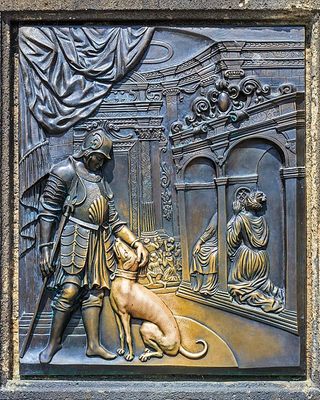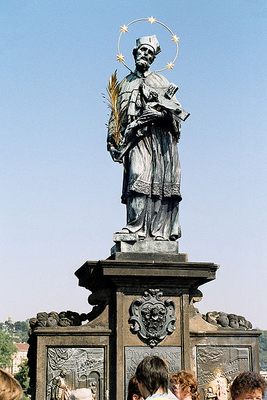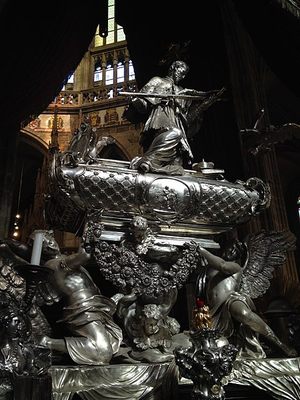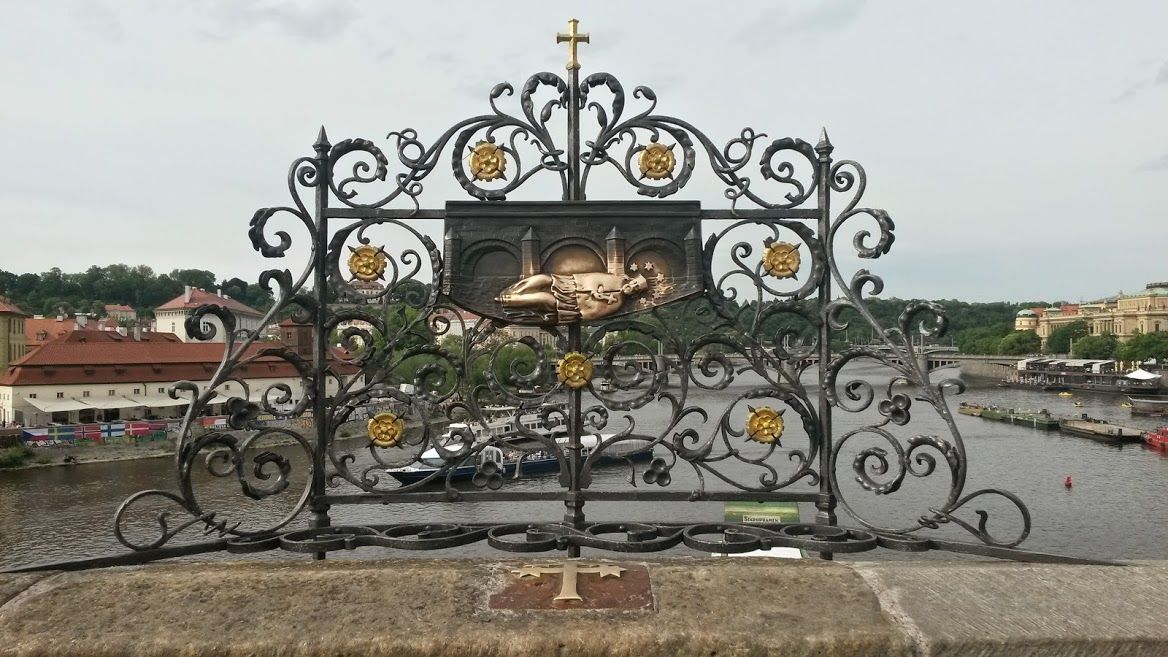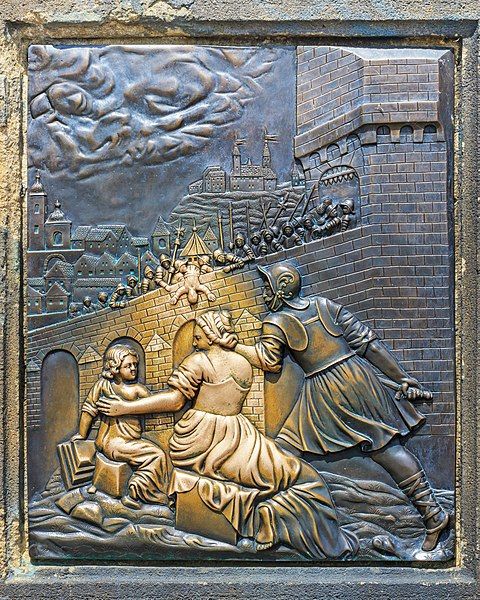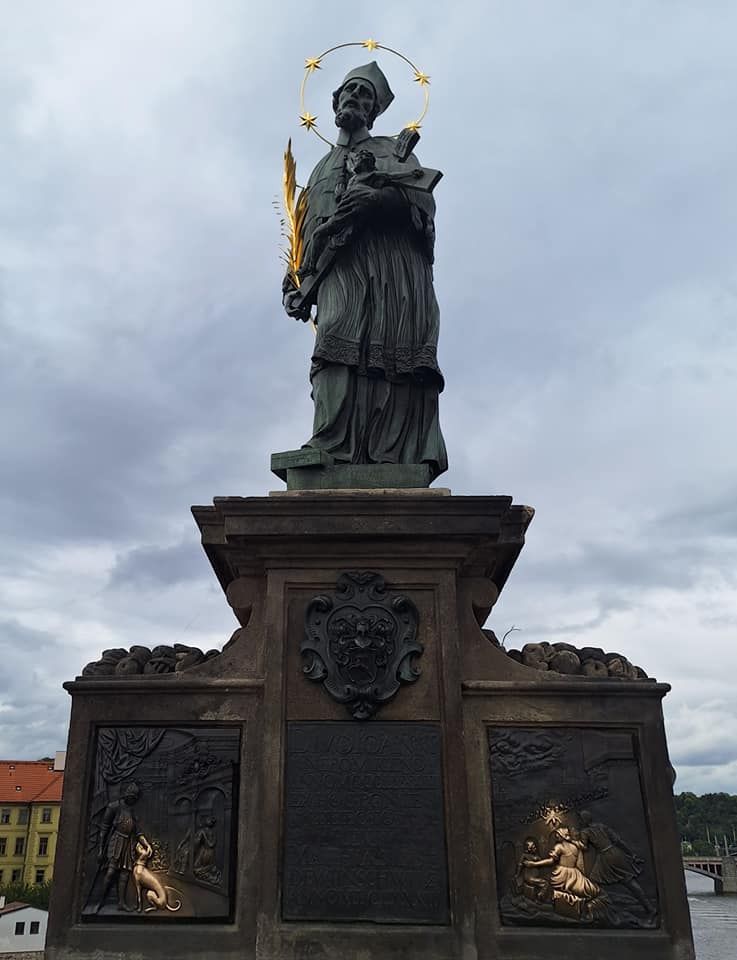About
John of Nepomuk is a beloved Czech Saint and local icon of Prague. His gruesome demise at the hand of King Wenceslaus IV of Bohemia at one of the city’s most iconic landmarks, in part, led to his notoriety.
Per legend, Saint John was the confessor of Wenceslaus’s wife, Queen Joanna. An increasingly paranoid Wenceslaus pressed Saint John to divulge what Joanna had disclosed to him in the confessional, yet John refused. Incensed, the king ordered for John to be tortured and executed.
On March 20, 1393, the priest was thrown from the Charles Bridge into the Vltava River below. It was said that when John hit the water, five stars appeared in the sky over the river. As a result, Saint John is often depicted with a halo of five stars encircling his head. Due to the nature of his martyrdom, John of Nepomuk is considered to be the patron saint of protection from drowning and floods.
In actuality, the story of Saint John and Wenceslaus IV did involve some palace intrigue, but is certainly less salacious than the myth suggests. The contention between the king and the priest likely stemmed from a dispute over who had the authority to appoint clerics to hierarchical positions. Regardless of the reason for his martyrdom, John of Nepomuk was officially declared a canonized saint three centuries after his death.
It is the legend, however, that is the most popular version of events—as well as the one that's immortalized on the Charles Bridge. The very spot Saint John was said to be thrown from is demarcated by a plaque on the bridge's northernmost parapet, which bears a cross with five stars. Immediately above the plaque is a wrought-iron tableau depicting Saint John at the bottom of the Vltava.
The Charles Bridge is well-known for being lined with statues of Jesus, the Holy Family, and other saints, including John of Nepomuk. Located a few yards to the left of the plaque marking the location of his martyrdom is a statue of the saint. With a pained face, he is easily discernable by his iconic five-starred halo. If the Charles Bridge has heavy foot traffic, you’ll also be able to find the statue by the tourists lining up to see what is at its base: two placards depicting the saga leading to the priest’s demise. The plaque to the left is a scene in which Queen Joanna is in the confessional with Saint John; in the foreground, a knight pets a dog. No one seems to know exactly why the knight and his dog were incorporated into the scene, but it may be symbolism for loyalty. On the right-hand plaque, Queen Joanna is forced to watch as Saint John plummets into the river.
Visitors to the statue will notice that certain areas on these plaques have a shinier, more golden hue than the rest of their surroundings: the dog, the queen, and the saint. This effect comes from several years of visitors rubbing these plaques out of devotion or for good luck. One of the myths surrounding this ritual is that if you rub the image of Saint John, you'll one day return to Prague. (Hence the line of tourists surrounding the statue at busy times.)
From these tributes to John of Nepomuk on the Charles Bridge, you can look up to the hilltop Prague Castle Complex to see the final resting place of what are purported to be remains of the saint.
After his martyrdom, a body believed to belong to Saint John was recovered from the Vltava and laid to rest at Saint Vitus Cathedral within the castle complex. These remains were exhumed in the 18th century, when a shocking discovery was made: a piece of bright pink matter, believed to be a tongue, remained undecomposed. Regarded as a miracle, the Pilgrimage Church of Saint John of Nepomuk was constructed in the Czech town of Žďár nad Sázavou in 1723 to hold this relic.
The remains of Saint John of Nepomuk, including the purported tongue, were re-examined by forensic scientists in 1973. The bones, which were confirmed to be those of a middle-aged man, showed signs of violence— consistent with the torture endured by John before his execution. The “tongue,” however, was revealed to be congealed brain matter that had been preserved. Both the “tongue” and the rest of the body remain today at their respective resting places: the Pilgrimage Church of Saint John of Nepomuk and St. Vitus Cathedral.
Related Tags
Know Before You Go
You can walk across the bridge at any time. The monument is located on the northern side, about midway close to the eastern expanse. There is also a memorial on the outside of southern section of St. Vitus Cathedral near Prague Castle.
Standing in front of the bridge memorial, one will notice a golden brass circle impeded in a brick along the walkway. The proper way to pay homage to the saint is to step on the circle with the left foot, with the left hand covering one's heart and the right hand reaching to touch either side of the memorial.
Community Contributors
Added By
Published
January 29, 2019




